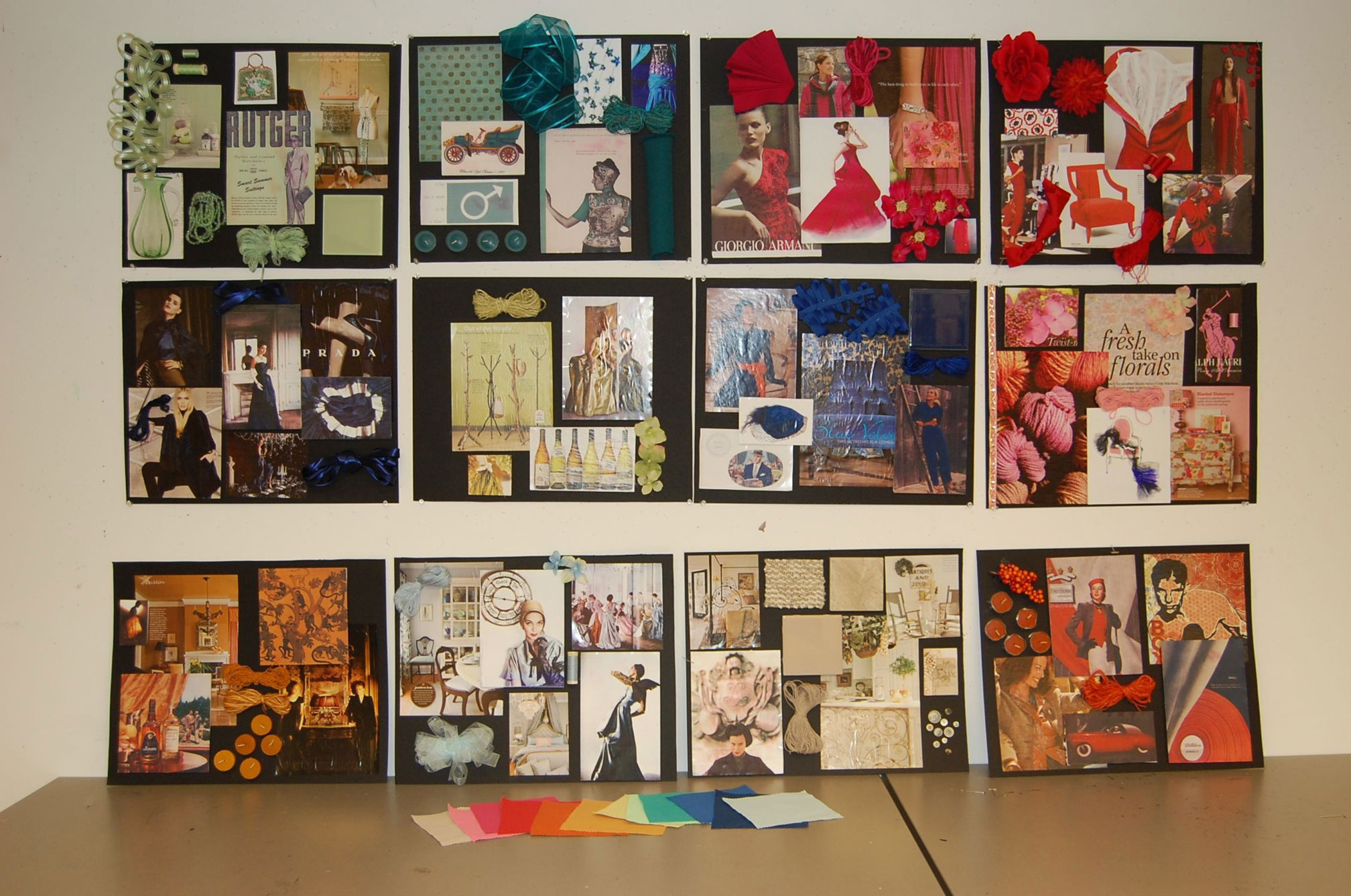A new exhibition, Pattern and Palette in Print: Gentry Magazine and a New Generation of Trendsetters, opens March 17 at the Georgia Museum of Art. It will be on display in the Dorothy Alexander Roush and Martha Thompson Dinos Galleries until June 17.
The exhibition is a collaboration between undergraduate fabric design students taught by Clay McLaurin, chair of the fabric design program at the Lamar Dodd School of Art. The exhibition takes as its inspiration Gentry, a 1950s men’s lifestyle magazine that successfully captured nearly a decade of trends in menswear, with special emphasis on textiles and color.
As part of a lesson in color forecasting and its significance to fabric design, students were asked to find inspiration in the pages of Gentry and in other 1950s-era media for creating a relevant master color palette. They then designed their own patterns, using the selected colors and drawing on imagery and themes in the magazine.
“This collaboration provided an amazing opportunity for our students to work with experienced staff from a high-caliber museum,” McLaurin said. “The students not only learned about professional museum practices, but learned about the color forecasting industry as well as pattern development from an accomplished textile designer.”
The exhibition will consist of all 22 Gentry magazine covers, the student’s printed patterns, a small selection of period menswear (for example, a wool duffer coat with Dutch fishing hemp button loops, mahogany pegs and a selection of Botany brand wool tartan ties), other objects frequently advertised in the magazine (including a Vanity Fair nylon perma-pleated nightgown) and objects from the Color Association of the United States, including a book of original color forecasts for the years 1949-1954.
William Segal, the founder and publisher of Gentry, also founded and published American Fabrics, the country’s premier textile trade magazine for more than 40 years. Segal owned CAUS for more than 50 years and was born in Macon.
The exhibition was curated by Mary Koon, an editor at the GMOA; Susan Hable Smith, textile designer and creative director of Hable Construction; and McLaurin.


